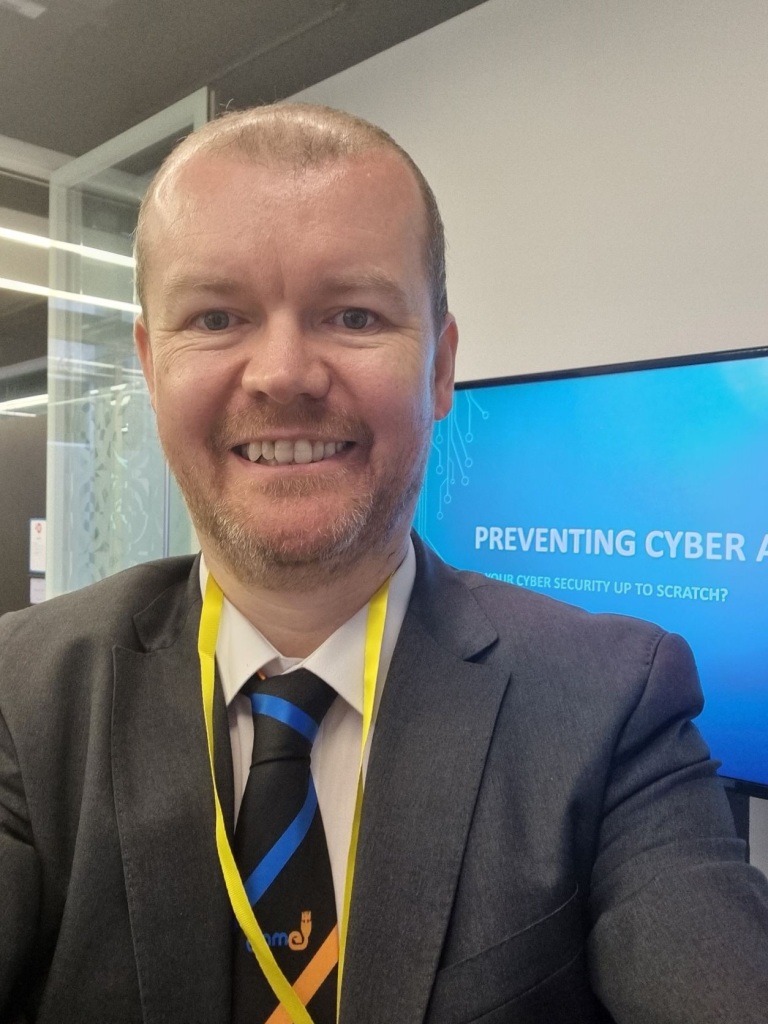I wrote a day in the life blog piece some month back, focussed very much on my work day as a Director of IT, however given the ongoing discussions of wellbeing I thought I would share another day in the life, but this time focussed on the wellbeing side of my daily routine.

6am and the day begins; Am currently trying to achieve 100km of running in June, having completed the same distance in May. This will be the first time I have managed it in 2 consecutive months. Running gets the blood flowing and sets me up for the day, while also allowing me to clear the often busy thoughts in my head, instead simply focussing on putting one foot in front of the other, keeping a reasonable pace and managing my breathing. This morning though I am cutting my run short to around 5.75km to allow me to head into work a little earlier due to concerns I have in relation to traffic. It is the first day of Glastonbury so I am worried that traffic around Somerset might be a total nightmare.
By 8am I am in work as the traffic was a little heavier than normal but otherwise not too bad. I have my usual morning routine to work through including looking at my online ToDo list where tasks are split between low and high priority items. I also have listed personal items to consider at lunch or failing that at the end of the day; The ToDo list is a holistic list rather than a work only list. For me the ToDo list is very important as ticking items off gives a sense of achievement, and the morning review of the items gives me a sense of how much flexibility I have in being able to address any unexpected tasks or requirements which might arise during the day. I do sometimes wonder if I have become a little too focussed on my ToDo list leading me to chase the completion of X tasks each day rather than focussing on doing the things that really matter.

Around halfway through the morning and its time to stop briefly and munch down a packet of crips and drink the all important Irn-Bru. There are plenty of healthier snacks I could have but I enjoy a packet of crisps and a Bru, so in the interest of balance and having engaged in physical exercise in the morning, I don’t think there’s any harm in a packet of crisps. Now at this point in the day I have already ticked off 4 of the 6 items I target myself with completing each day. This target helps me assess how I am doing versus what I consider to be a minimum expectation. I note that I include some thinking time and prep time on my ToDo list as these equally take time and it is important to allocate space and time as otherwise, other often less important but more immediate issues will take over.
Before I know it lunch time arrives and a opportunity to go to lunch with some of my team and decompress a little with discussions of sport and also some IT discussions; Is always the case that discussion may tend towards whatever you do for a living as this is an easy topic to discuss however key is that it isnt within the context of the school or teaching and learning, etc. I also try to make some time to scribble down some blog thoughts over the lunch period and also do a little bit of news and current affairs reading via the web.
My afternoon passes reasonably quickly due to a number of meetings so before I know it 5pm has been and gone and the work day is done. It is as I leave work that I notice what a nice day it is which is enhanced further by the drive home through Somerset. As I take in the weather and the scenic drive which is my normal route home I note that I feel just that little bit happier and more relaxed, albeit also a bit tired. It is amazing how nice weather, a look around the lovely somerset scenery and a drive home with the windows down can positively impact on your wellbeing. Sometimes it is the little things which make all the difference. Upon arriving home I stick some retro TV on in the background, a bit of Farscape and Space 1999, while I sort dinner and do a couple of other jobs around the house, with some of these jobs being listed on my ToDo list.

7pm and the dog is fed and wants attention so it’s a bit of time with the dog in the garden. Now will admit I was not keen on getting a dog but note that, although she is in the process of methodically destroying the house and all furniture she can get to, she also makes me smile at times. And maybe this highlights the impact that a smile can have on our wellbeing so maybe a part of wellbeing is on finding or creating as many opportunities to smile as possible in your day.
As the evening progresses there are a couple more things to do around the house before settling down to watch a bit of TV and I my case, rewatching Homeland. It is at this point I decide that rounding the evening off with a couple of beers would be appropriate. Again, not exactly the most healthy option however in everything, balance, so a couple of beers after a busy day seems perfectly acceptable.
My day was a busy one but I think it had some balance. It had the less than healthy packet of crisps and Irn-Bru but balanced out against a run in the morning. It had immediate tasks balanced against some time to plan and think ahead. It had some quiet and relaxing in front of the TV but also a number of items ticked of a ToDo list both at work and at home. Now every day cannot be a balanced as this one, with some days feeling like my hair is on fire and nothing can go right but again this is balanced out by other days when everything seems to simply fall into place.
Personal wellbeing, and in particular mental health isnt an easy thing but for me I think one of the critical factors is building routine and making time for the various aspects of life to be fulfilled whether that is the need for feelings of accomplishment, the need for challenge, the need for time to reflect or the need to relax and decompress. I also think we need to always seek to achieve balance and with that comes the acceptance that some days wont go well, but that it will then be ok to seek to balance this out through whatever works for you being it a few beers, some exercise, a trip to the cinema, a good book, etc.
Am not sure how much use there is in me sharing the above, however I hope that maybe someone finds it helpful, or failing that I suspect it will simply help me in rebalancing when things go badly and I cant see the light at the end of the tunnel, on the next day when things just don’t seem to be able to go right for me.





